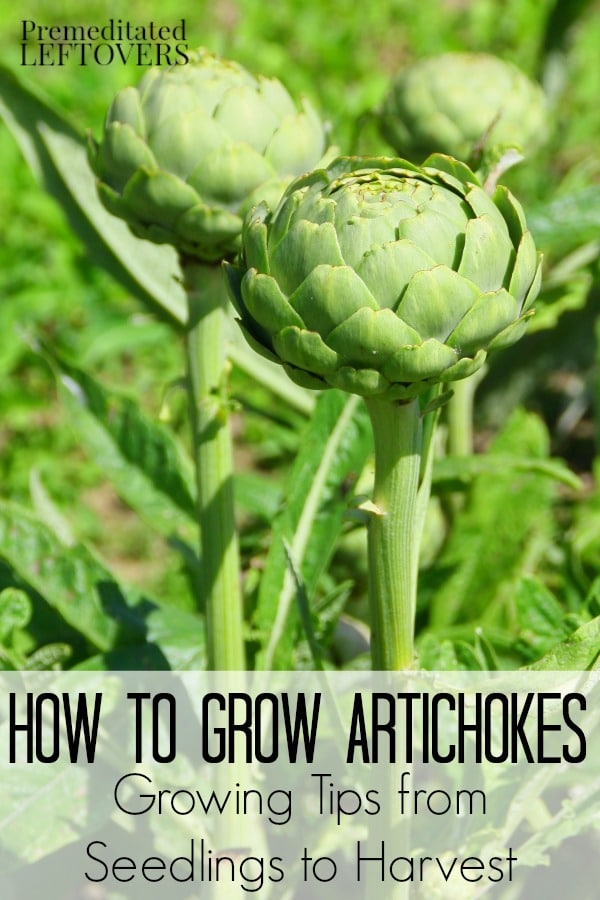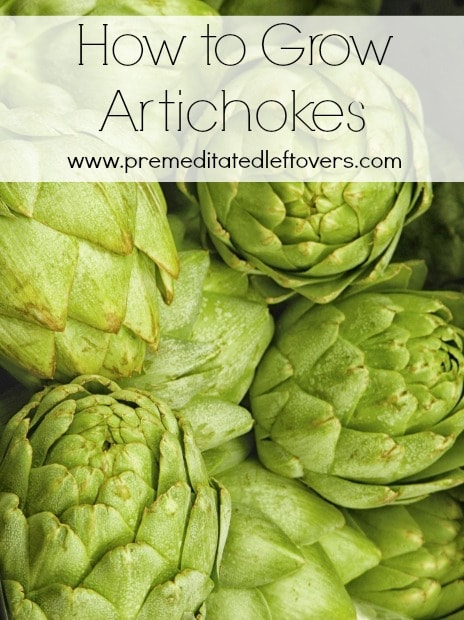
Do you love a hot bowl of artichoke dip? Or what about some tasty grilled artichoke? If you love all things artichoke, why not consider planting some in your garden this year? Artichokes are easy to grow and can be enjoyed in so many ways, so even if you are not a gardening pro you can still have fresh artichoke at your fingertips. Take a look below at these helpful tips on how to grow artichoke in your garden!
How to Grow Artichokes
How to plant artichoke seedlings:
It is advised that you plant artichoke seedlings to give your artichokes a fast and strong start. When planting your artichoke seedlings, you want to plant them in amended soil that is nutrient rich and drains well. The space should also have at least 6-8 hours of sun. Plant the seedlings so they are about 4 feet apart and at a depth that is twice as deep and wide as the seedling root base.
If you don’t have a great deal of gardening space, you can plant artichokes in containers. Make sure your containers are generous in size and opt to plant 1-2 plants per container. You don’t want to crowd them.
How to care for artichoke seedlings:
Once your artichoke seedlings are in the ground, you will want to provide them with some special care. Fertilize the seedlings once a month using a liquid and food safe fertilizer. In addition to the liquid fertilizer, some like to feed pot ash fertilizer to their artichoke plants as often as every two weeks. This pot ash fertilizer gives the plant the potassium it needs to really thrive.
Artichokes need a moderate amount of water, and about 2 inches per week should do. Apply water to the base as opposed to pouring it over the plant. Mulch can help retain moisture in the roots as well as smother out any weeds in the process.
Artichoke plants can easily succumb to weeds if you are not careful. Apply a thick layer of mulch around the plants (3-4 inches) to keep weeds at bay. Remove any weeds you spot immediately.
How to achieve a strong artichoke crop:
Your artichoke plants will have two major nemeses that wish to do them harm: slugs and weeds. As mentioned above, a thick layer of mulch can help keep weeds under control, as can regular picking. As far as slugs, they love to feed on the foliage of artichokes. Put out slug traps (shallow bowls of beer) near your artichoke plants so the slugs visit those instead. They will quickly crawl in and meet their demise and your plants will be safe!
How to harvest artichokes:
Don’t allow your artichokes to sit too long. Picking them when they are just beginning to open is the best way to ensure you get them when they are at their most flavorful. The buds on the plant should be starting to open but not fully expanded yet. The buds of the plant should be firm to the touch as well.
Once harvested, artichoke will stay fresh when refrigerated for up to two weeks. Artichoke can be served in dips, both hot and cold, salads, and more.
Give these tips for growing artichokes a try and see what you can achieve in your own garden!


Hacqueline says
I have read they are prennial. How do you care for the plants after harvest?
Sandy says
what zones do Artichokes grow in?